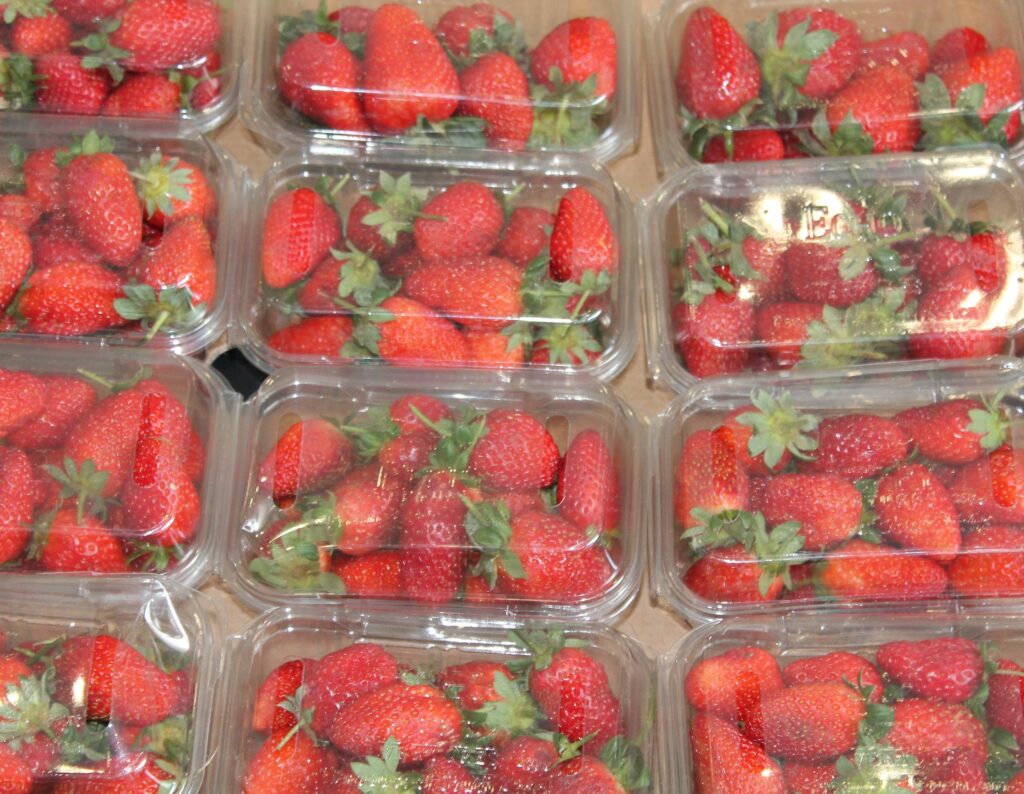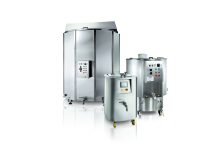 Plastic food packaging increasingly contains antibacterial agents to prolong the shelf-life of food.
Plastic food packaging increasingly contains antibacterial agents to prolong the shelf-life of food.
Antimicrobial agents are often incorporated into polymeric films, that have properties such as transparency, flexibility, strength, stiffness, and a barrier to oxygen and moisture. A review of Chinese university scholars (T. Huang et al., 2019) has systematically described the most commonly used antimicrobial plastics in food packaging, focusing on both plastic materials and antimicrobial agents.
Plastics most used in antimicrobial packaging
The polymeric food packaging materials can be further divided into non-biodegradable and biodegradable polymers. Non-biodegradable polymers mainly include:
- Polyvinyl chloride (PVC), which is flexible, soft, tough and provides ease of heat sealing;
- Polypropylene (PP), which can effectively resist water vapor and has a high melting point making it suitable for high temperature packing applications;
- Low density polyethylene (LDPE), which is the cheapest among plastic films, can effectively resist water vapor with good transparency, but cannot hold back oxygen, carbon dioxide and some other vapor compounds;
- High density polyethylene (HDPE), which is stiffer but less transparent than LDPE;
- Poly(ethylene-co-vinylacetate) (EVA), widely used for its flexibility, heat sealability, high adhesivity, non-toxicity, good clarity and stretch properties;
- Poly(ethylene terephthalate) (PET) , offering relatively good mechanical strength, toughness and easy professing.
In countries where landfilling is the main method of waste management, the use of biodegradable polymeric materials is the most promising even for biodegradable polymer antimicrobial packaging, which mainly includes:
- Polylactic acid (PLA), which is non-toxic and water soluble; One of the major disadvantages of PLA is its high permeability to gas and vapor, limiting its use for short-life packaged food; it is usually mixed with other low-permeability polymers;
- Cellulose is the most abundant natural polymer, but its sensitivity to water limits its applications;
- Starch has the advantage of being a moderate oil barrier, but it is weak in a moist environment because of the hydrophilic function groups in its molecular structure;
- Chitosan, which can be produced by extrusion and press molding techniques; Chitosan films are used to prolong the shelf life and preserve fresh food due to their good antimicrobial properties.
 Antimicrobial agents most used in packaging.
Antimicrobial agents most used in packaging.
There are natural antimicrobial agents and synthetic antimicrobial agents. The main antibacterial components are synthetic organic materials, which mainly contain ethylene diamine tetraacetic acid (EDTA) and parabens, which are also used in other applications (soaps, etc.). Synthetic agents more effectively inhibit bacterial growth bacteria than natural agents, and therefore they are widely used.
However, their toxicity must not be ignored, and the reduction in the toxicity of these materials is under investigation. Compared to synthetic antibacterial agents, the toxicity of natural antibacterial agents is low; however, production costs are high mainly because they require sophisticated and expensive extraction procedures. Despite this, natural antimicrobial agents are the most widely used, especially essential oils (EO).
EOs are extracted from plant materials, such as flowers, buds, seeds, leaves, wood, fruits, roots, twigs and barks via compression or distillation processes. EOs are mainly mixtures of natural volatile compounds, such as phenolic compounds, which are responsible for their antibacterial, antifungal, antioxidant, antiviral, antimycotic, antioxygenic, antiparasitic, antibiotic and antiseptic properties.
According to the Food and Drug Administration, EOs have Generally Recognized as Safe (GRAS) status. Three methods are generally employed to utilize EOs as antimicrobial agents: 1) mixing EOs into basic materials; 2) coating EOs onto food packages; and 3) loading EOs into an antibacterial pouch. Among these methods, mixing EOs with other polymers is commonly used because it is convenient and easily applied to mass production. Examples of antimicrobial plastics are described below, along with their applications:
*Antimicrobial PLA films incorporating different concentrations of Mentha Piperita EO (MPO) and Bunium percicum EO (BPO) and nanocellulose (NC)were used to preserve ground beef at 4°C for 12 days. The material was verified to have antimicrobial activity against Staphylococcus aureus, Enterobacteriacea and Pseudomonas. The film prepared with a solution of 1% w/v PLA, 0.5% v/v MPO and 1% v/v NC had the best effect in terms of antibacterial and organoleptic characteristics. With EO addition, the performance of water vapor barrier was improved.
*PLA films containing Origanum vulgare L. virens EO (OEO) were used in ready-to-eat salads. This new active packaging shows antimicrobial properties aganist yeasts and molds, and 5% and 10% of OEO are the most effective. Furthermore, these films offer suitable mechanical properties;
*1% of thyme essential oil (TEO) incorporated as antimicrobial agent into a biodegradable film skate skin gelatin film was used in the packaging of chicken tenderloin samples effectively inhibited the growth of Listeria monocytogenes and Escherichia coli O157:H7.
In summary, the development trends of antibacterial food packaging materials have been outlined. First of all, new safe and highly effective antibacterial agents should be developed to obtain broad-spectrum activity of packaging materials. The use of synthetic antimicrobial peptides goes in this direction.
Second, the controlled release of antibacterial agents has become an important research direction, because it allows to extend the antibacterial property of materials. Third, green and environmentally-safe food packaging is a growing trend. Hence, biodegradable, low cost and easy-to-obtain polymers should be ideal candidate substrate materials for food packaging. Finally, highly comprehensive, systematic, and unified standards are needed to evaluate their antimicrobial activity and food safety.
References: Huang et al., Polymers, 11, 560, 2019; doi:10.3390/polym11030560.



